Year: 1999
Directed by: Josef Rusnak
Written by: Daniel F. Galouye (book), Josef Rusnak & Ravel Centeno-Rodriguez (Screenplay)
IMDB Reference
Degree of Cyberpunk Visuals: Very High
Correlation to Cyberpunk Themes: High
Key Cast Members:
Douglas Hall/John Ferguson/David: Craig Bierko
Hannon Fuller/Grierson: Armin Mueller-Stahl
Jane Fuller/Natasha Molinaro: Gretchen Mol
Jason Whitney/Jerry Ashton: Vincent D’Onofrio
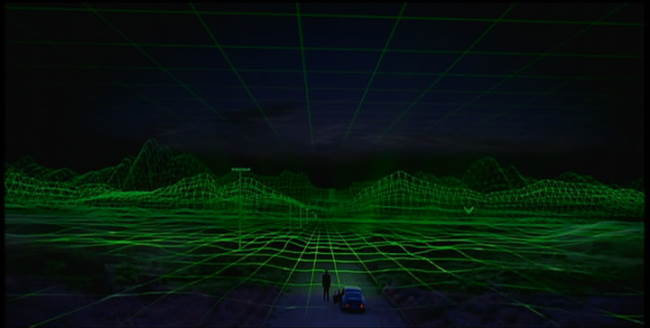
Bad fucking trip??? No…These people are real…as real as you and me.
Overview: The Thirteenth Floor is one of the truly fun virtual reality (VR) movies out that have been produced. This movie has everything from a fun film noir settings in a VR simulation, to pure mind fuck scenes, to great VR effects. The story catches you from the beginning and picks up speed as it goes. To top it off, Thirteenth Floor is loaded with style.
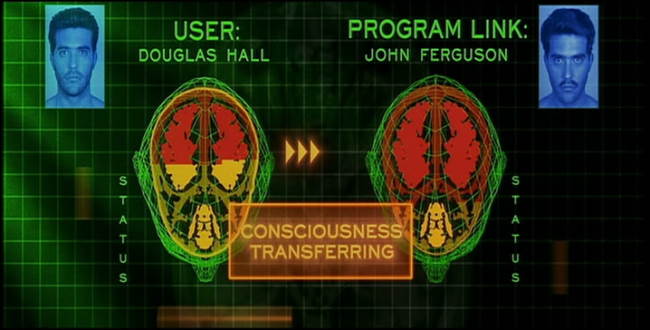
The Thirteenth Floor centers on a small R&D software company (located, um, on the thirteenth floor of a large building) that has created a completely realistic similated world that has lifelike VR Sims. Corporate owner and computer scientist Hannon Fuller (played by Armin Mueller-Stahl) discovers a secret so important that he’s sure someone is trying to kill him. He hides a message for his protégé, Douglas Hall (played by Craig Bierko), inside of the 1930s game simulation. After Fuller is murdered, things get truly strange. His previously unknown daughter (Gretchen Moi) comes to claim the corporation in order to shut it down, and a Detective (Dennis Heysbert) investigating the murder becomes convinced that Hall is guilty. When Hall , with the help of the lead programmer (played wonderfully by Vincent D’Onofrio), enters the “game” by taking over the consciousness of one of the game sims, he eventually learns the earth-shaking secret. Unfortunately for Hall, one of the game sims has learned it as well, and is not happy about it. At this point, the Thirteenth Floor truly takes off.
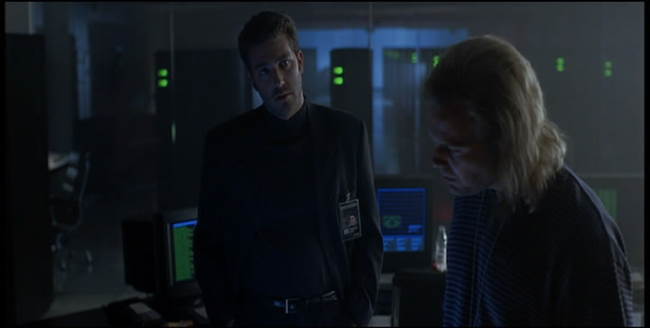
The Visuals: The Thirteenth Floor is loaded with high tech visuals in the “real” world and realistic film noir thirties visuals in the simulation. The modern visuals are sleek, with shocking neon greens, blues and reds interwoven into a dark blue-gray environment. Considering cyberpunk comes from a future-noir approach, I found the film noir add-on doubly appealing here.
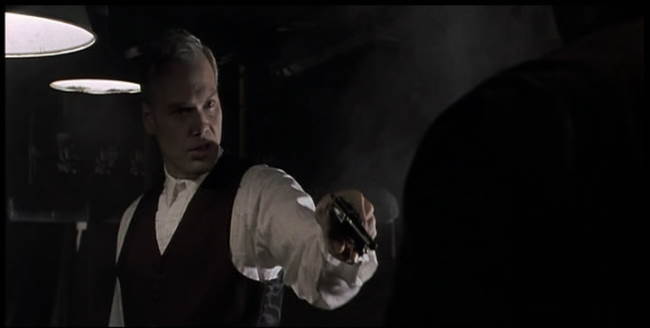
The Bottom Line: The Thirteenth Floor has a terrific cast and an interesting story that really does work for the most part. While only a few characters are given real depth, the story and effects are able to carry the show. The cinematography is truly terrific, with great use of shadows and interesting lighting contrasts. On top of this, the ending provides us with a very interesting and well done mind fuck that will stay with you for a few days. All in all, thirteenth floor also has some nice cyberpunk musings concerning the nature of reality, and whether or not we would really know if it we were actually a part of some game designer’s grand simulation.
~See movies similar to this one~
Tags: cyberpunk movie review Thirteenth Floor
Year: 1999
Directed by: David Cronenberg
Written by: David Cronenberg
IMDB Reference
Degree of Cyberpunk Visuals: Medium
Correlation to Cyberpunk Themes: High
Key Cast Members:
Allegra Geller: Jennifer Jason Leigh
Ted Pikul: Jude Law
Kiri Vinokur: Ian Holm
Gas: Willem Dafoe
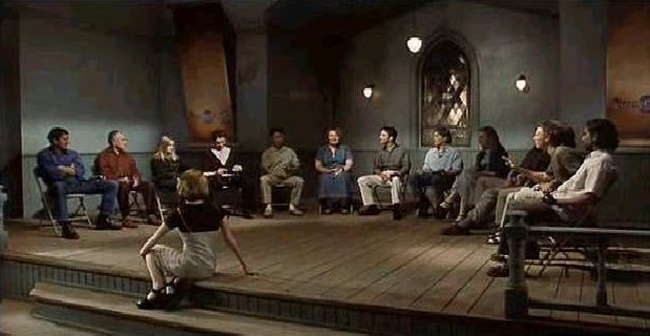
Overview: Existenz is one of the really good twist-your-brain VR game movies. ExistenZ allows us to imagine a rather strange future where games themselves potentially tear down the fabric of humanity. David Cronenberg, master of the weird, has Jennifer Jason Leigh starring as Allegra Geller, a game designer who creates VR games that are inserted directly into the spinal cord from an invasive “game pod” modification into the middle back vertebrae. Entire sets of players use living “game pods” to interact in the VR games. In this movie, Allegra is doing a “focus group test” on her latest game called eXistenZ. Everything appears fine until all hell breaks lose when one of the players gets up and tries to Kill Allegra for destroying the fabric of society.
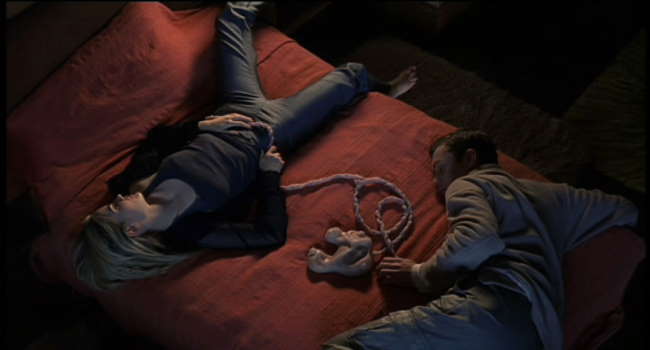
As the movie progresses, Allegra and Ted Pikul (played by Jude Law), an unsuspecting marketeer are thrown together during the escape. While on the run, Allegra talks Ted into experiencing eXistenZ. To do this, he needs to get a game pod installed in his back. Things go from bad to worse as they attempt to get a pod from a shady guy, and significantly damage Allegra’s game pod, which has the only copy of ExistenZ anywhere on it. As the movie progresses, Cronenberg makes sure the viewer never really knows if the characters are in the very real looking game, or are actually in reality.
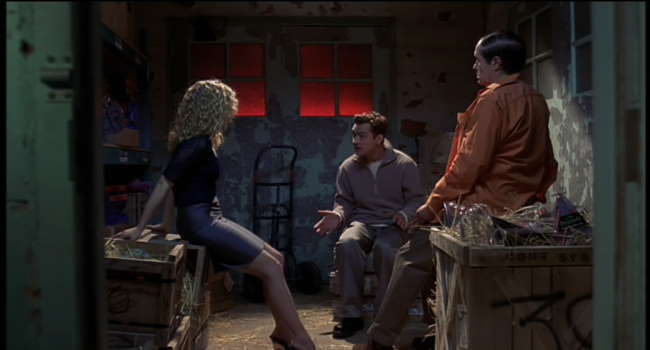
The Plot and Pacing: The plot is more than passable in eXistenZ, the action is good, and the acting is above average. Jude Law, Leigh, Ian Holm and Willem Dafoe are very solid and engaging in selling this story. The pacing gyrates from massively wierd head-spins to periods of calm and reflection. All in all, it’s enough to keep you captivated.
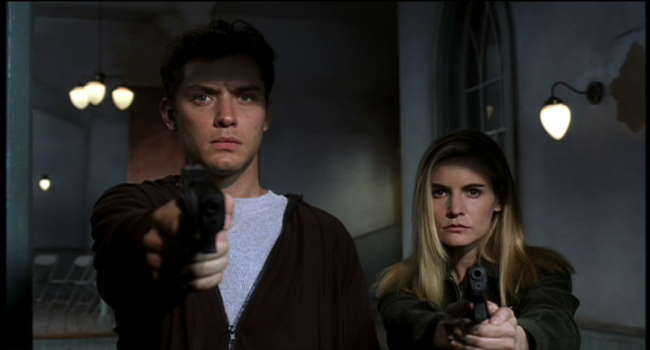
The Bottom Line: ExistenZ asks the question whether we truly know when we are in reality or not? This is interesting in that if direct VR type connections get made to the human nervous system as Kevin Warwick’s work suggests might be one day (soon) possible, this question becomes significantly more pertinent. All in all, this makes for a wonderful cyberpunk flick with some terrific scenes and interesting thoughts. With a production budget of only 15 million, the visuals are not always high tech (there are a few cool beasties though), but the story serves to aid in suspension of disbelief.
~See movies similar to this one~
Tags: cyberpunk movie review ExistenZ
Year: 1982
Directed by: Steven Lisberger
Written by: Steven Lisberger, Bonnie MacBird
IMDB Reference
Degree of Cyberpunk Visuals: High
Correlation to Cyberpunk Themes: High
Key Cast Members:
Kevin Flynn/Clu: Jeff Bridges
Alan Bradley/Tron: Bruce Boxleitner
Ed Dillinger/Sark/Voice of Master Control Program: David Warner
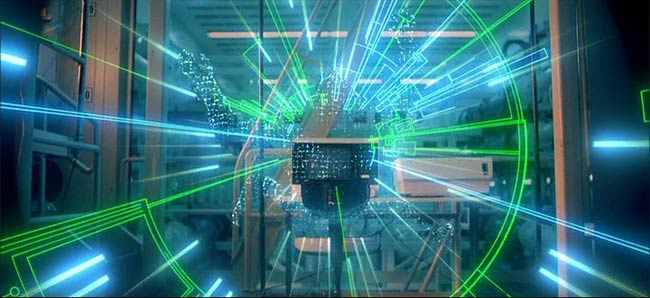
Overview: How could a cyberpunk review site NOT have Tron? We’re talking about the first CG movie, and truly, a groundbreaker VR movie. Make no mistake, this is a pre-cyberpunk movie, complete with corporate greed, theft, integration of human and computers, ubiquitous access to information, a dystopian world (inside the program, anyways), and pure cyberpunk visuals and style. While Tron is slightly cheesy in parts, its still a hell of a ride!
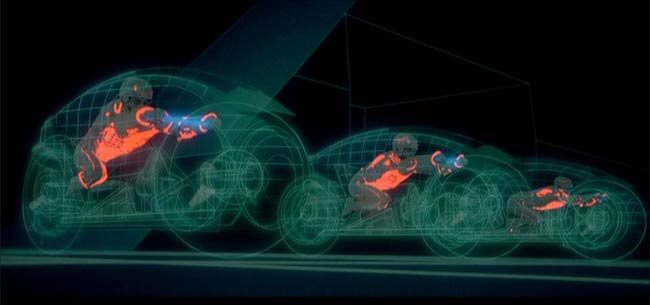
In Tron, a computer programmer (Jeff Bridges) who has his programs stolen from him tries to go back into the corporation to get them, but somehow gets sucked back into the game he developed. From there the fun begins, as Bridges has to square off against contestants and the Master Control Program in order to escape back to the real world. Most of this adventure takes place within the program world, and involves some awesome games and fun chase scenes.
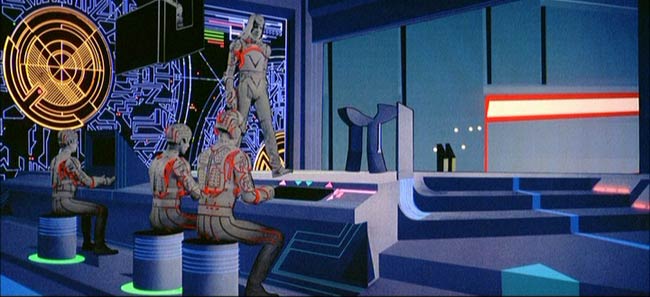
Like the Wizard of Oz before, and eXistenZ and Thirteenth Floor after it, the players in the game bear a striking resemblance to their human users. Some movies call this “residual self image” - others just build this concept into the design of the system. But while this convention existed in fantasy realms, Tron successfully set the pattern for most future VR films - you look the same on the inside of the VR system as you do on the outside.
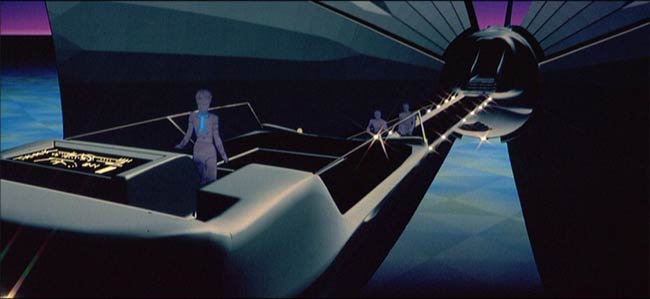
Tron has a rather silly aspect about it in that it continually uses computer terms in non-sensical ways. As steeped in computer-speak as we are today, these stick out like a sore thumb. However, at the time (1982), very few people would have noticed this. The idea was to just get the cyber-atmosphere permeating the movie, which Tron did most effectively. In setting the trend for most most cyberpunk movies that follow, neon colors are “In”, as is the idea of a single dominating color the permeates the movie - in Tron’s case we get mostly blue, along with red representing the bad guys.
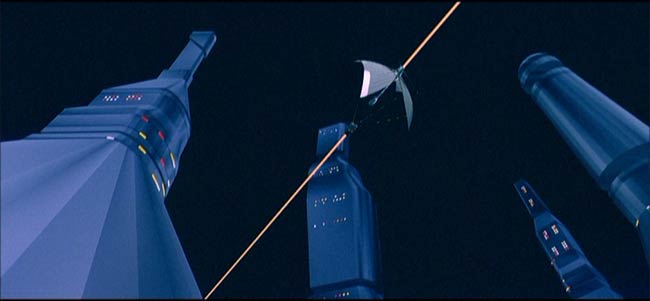
Yes the FX are dated now (God I hope so!). We’re talking about the real early days of computer graphics. Still, some of the shots still hold up well, and overall, the visuals are still very enjoyable. Tron is designed to have a sense of wonder about it - this still works. The car race game in particular is still VERY fun! Another thing that still works is the music accompanyment - Wendy Carlos’s synthesizer-laden soundtrack fits this movie perfectly.
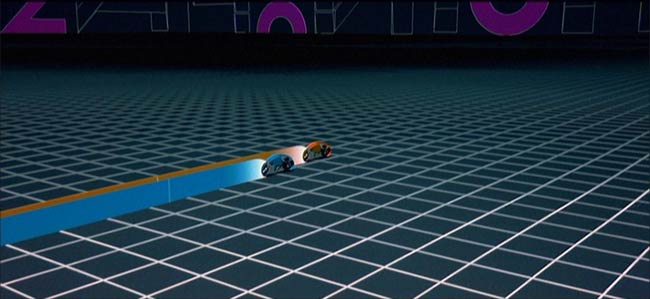
Overview: Jeff Bridges, Babylon Five’s Bruce Boxleitner, and David Warner as the evil bad guy (The exec Ed Dillinger, the game player Sark, and the Voice of the Master Control Program) all provide very fun performances. They are able to make this crazy environment work well enough that it still comes across as a rather cool cyberpunk flick. And truly, if you’re into VR cyberpunk movies, Tron is a MUST SEE - so much so that one point has added to this review score for its historical place in VR films.
~See movies similar to this one~
Tags: cyberpunk movie review Tron
Year: 2001
Directed by: Mamoru Oshii
Written by: Kazunori Itô
IMDB Reference
Degree of Cyberpunk Visuals: Very High
Correlation to Cyberpunk Themes: Very High
Key Cast Members:
Ash: Malgorzata Foremniak
Murphy: Jerzy Gudejko
Game Master: Wladyslaw Kowalski
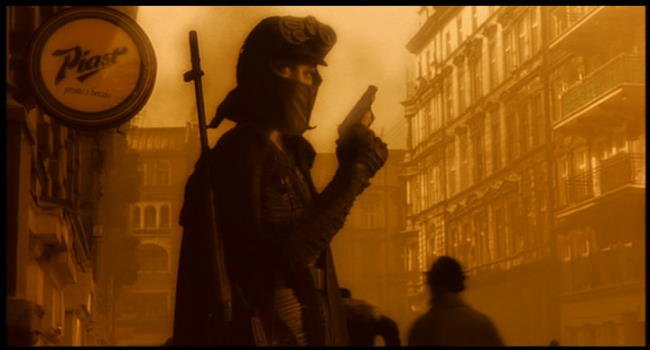
Overview: Mamoru Oshii, the master of philosophical cyberpunk animes ventures into a real world cinema production. The actors, dialogue and sets all take place in a Poland. Although this isn’t anime, the characters, cinematography and philosophy bare a striking resemblance to Oshii’s latest anime (which might show up on this list soon…). There is also many aspects of the Arthurian legend intermixed here, including the quest for the holy grail (understanding the nature of reality?), the search for the nine sisters of Avalon, and wizards, warriors and bishops. If you’re an Oshii fan, this is a must see. If you love VR game films this is a must see. If you like embedded philosophy and symbol laden movies, you will probably enjoy this. But if you’re coming purely for the action, there are probably better movies for you to spend your time on.
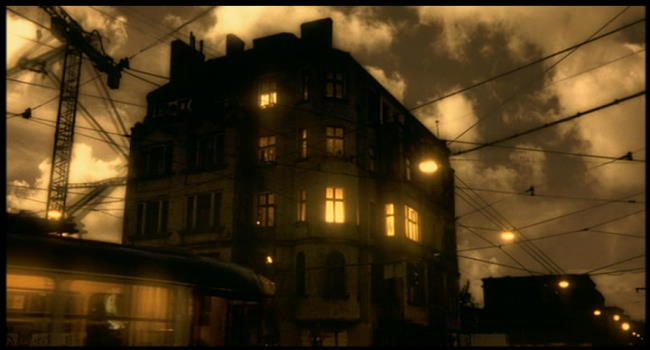
This movie takes place in a cyberpunk, dystopian future where the world is stark, devoid of real life or color, and where the only real enjoyment for young people exists in an illegal virtual reality game called Avalon. Avalon in mythical terms is the island where souls of the departed heroes come to rest. In the Virtual Reality Game of guns, tank and helicopter battles called “Avalon,” the players are the heroes, but there is a risk of actually becoming brain-dead while playing this game. In real life, the “unreturned” victims who never leave the game become human vegetables who sit around drooling in an insane asylum (this explains why the game is illegal).
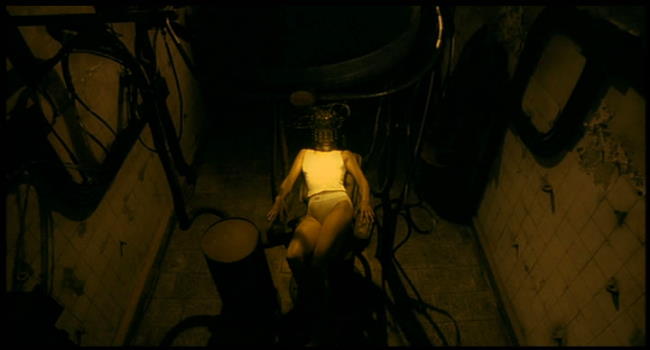
The main character is a hot warrior chick named Ash (wonderfully played by Malgorzata Foremniak). Once, she was a part of the best team in Avalon called Wizard. But something happened which caused one of the team members to panic under fire and call for a “reset” of the program (This is a traumatic action which causes all sorts of bad things to happen). This caused the team to disband and in Ash’s case, led her to be disconnected from all other players including Murphy, her team leader. Instead she becomes a supra-warrior who attempts to win the game going solo.
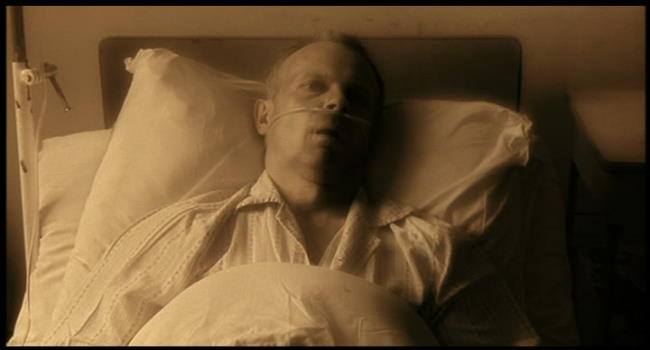
During her adventures, she learns that Murphy also went solo, and eventually worked himself up to finding a secret level called “Special A” that does not have a “reset” function. If you don’t complete the level, you don’t return. In essence, this level IS Avalon in the mythical sense. In Murphy’s case, he did not win, and ended up becoming one of the “unreturned” who lives out his “real” existence drooling in the asylum. Ash becomes obsessed with reaching this secret level so that she might find Murphy and return him. To complete this level, Ash needs to kill an illegal “unreturned” player. If she does wins, she will be offered a game admin job with Avalon. Unfortunately, Class Real is filled with “neutrals.” If Ash kills any neutral person she will lose, never to return.
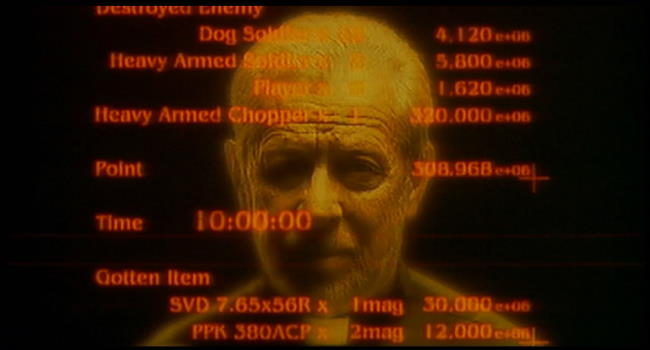
When Ash asks the Game Master if he’s real or not, his response is telling: “Does it matter if I’m real or not?” Like GITS:2 there is this notion that the line between what is real and what is imaginary almost doesn’t matter. What matters is what is actually occurring inside someone’s head: that is the “true” reality.
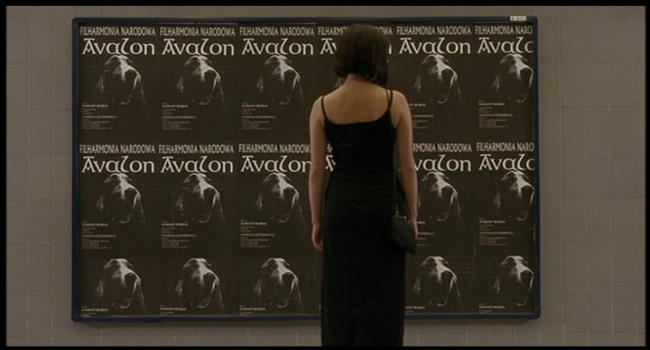
Use of a Dog as a metaphor for the “real” world: Again, similar to When Ash plays with her dog, she is participating in the “here and now.” Most of the time, Ash’s consciousness is situated in a timeless world where the actual real life moment is secondary to one’s perceptual reality. At one point early in the movie Ash wonders aloud, “Real life, is that what this is?” When she starts working at the computer, the dog goes to sleep, indicating that she has left real life and is in the game reality, if not in body, then definitely in spirit.
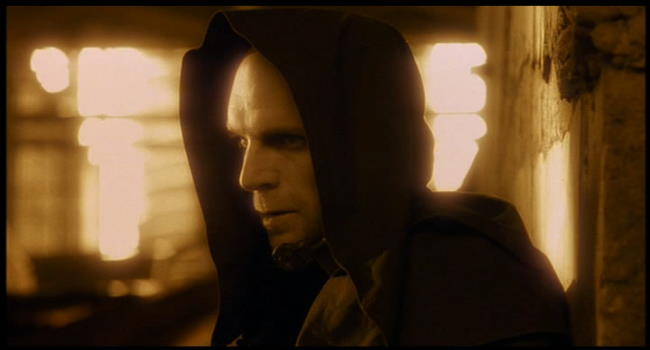
The cinematography: The cinematography in Avalon is strikingly familiar to Oshii’s latest anime. The same use of lighting, camera angles, and bright orange/yellow/brown tones are used. Interesting shots involving shadows abound. Throughout, the sets and camera pans are designed to elicit a closed-off, claustrophobic feeling. Everything, from Ash’s apartment to the train to the virtual reality headset rooms to the alleyways are bare and boxed in. Slow moving but sweeping pans add to the claustrophobia. Scenes are rarely at regular speed. Instead, the pacing is very slow moving to allow the audience time to take in the essence of the mood. In line with the pacing, Oshii continualy composes set shots similar to how he does in animes. In essence, we see glorious and elongated still shots of visually textured and wonderfully balanced objects.
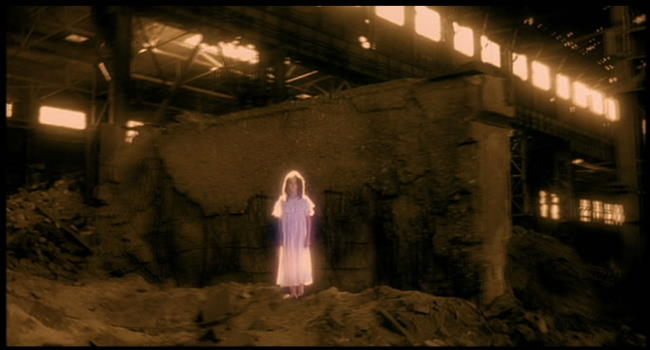
The FX and Sound: The special effects, while not on par with the high-end blockbusters, hold up well when compared to most VR type movies. Most impressive are the digitized explosions. When people and tanks "die" they digitally decompose in interesting ways. Similarly, when you enter the game, buildings auto-form. Also, the score is both haunting and moving. It highlights the slow build-up of thought and emotions. The mood of the film is clearly expressed through the score, which often serves as a catalyst for the pacing changes. As the major plot points change, so does the score radically follow suit. And the ending Avalon opera is just beautiful. I would pay to go see someone sing that.
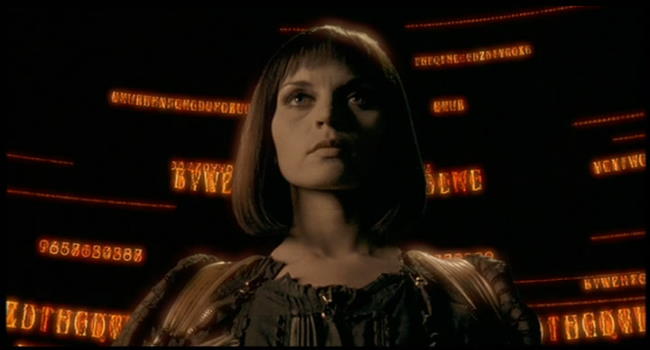
The Bottom Line: In short, Avalon is a wonderfully deep philosophical cyberpunk flick that fully explores whether reality truly matters. In essence, does it really matter if the fantasies we have running in our heads don’t really match the “reality” of the outside world? Or more to the point, is anyone really experiencing the reality of the outside world, or are we all just in our own personal Avalon? I hesitate to add more here, as doing so would spoil this most excellent movie for those few unfortunate souls who have yet to experience it. I have just one piece of advice - do so now!
But if you have seen it, I’d be happy do discuss detail philosophical thoughts with you concerning Avalon on Page 2: the Avalon Interpretive ending page. Many have expressed confusion over the ending, so I thought I’d share some thoughts on it. So if you have spoiler type questions about this movie, put them on page two (which also has more screencaps).
Page 2: Spoiler Discussion –>>
~See movies similar to this one~
Tags: cyberpunk movie review Avalon oshii
Year: 2000
Directed by: Shu Lea Cheang
Written by: Shu Lea Cheang
IMDB Reference
Degree of Cyberpunk Visuals: High
Correlation to Cyberpunk Themes: Medium
Key Cast Members:
Tokyo Rose: Aja

Overview: If you’ve been hankerin for a nice quality ultra-surrealistic medium-core porn Japanese cyberpunk flick, then look no further than I.K.U. Japanese cyberpunk movies are all about no boundaries and I.K.U. takes this notion to heart, coming up high on the wierd shitometer scale. For the soft-core goods, you get a bit of everything here: guy-on-girl, guy-on-guy, girl-on-girl, girl-on-transgender, voyeuristic sex through a fish tank while eating sushi, sex in a spider-web…well, you get the idea. And while if what you’re looking for is naked body parts, I.K.U. definitely delivers (some cases its pixelated out, but in most cases its definitely NOT pixelated out, even when you wish it was…). Fair warning though - this is NOT a “take care of yourself” type movie, as you will spend most of the time dumbfounded while watching it. I.K.U is an EXTREMELY strange, but well-done mind-fuck, pure and simple.

I.K.U. takes place in a very strange near-future Japan and follows a day in the life of a sex-roid from the GENOM corporation, who has the ability to change her outside shape to mimic different female body types. Her job is to collect “sexual experiences” by engaging in sexual acts with various people. The experiences are collected in order to produce virtual reality-like I.K.U. chips that are then sold in vending machines. The idea is that people can buy the chips and then “wire in” on the sexual encounter. Unfortunately, a rival corporation has developed rival androids who’s job is to insert a virus into the sex-droids and steal their “experiences” so that it can make its own rival chips.
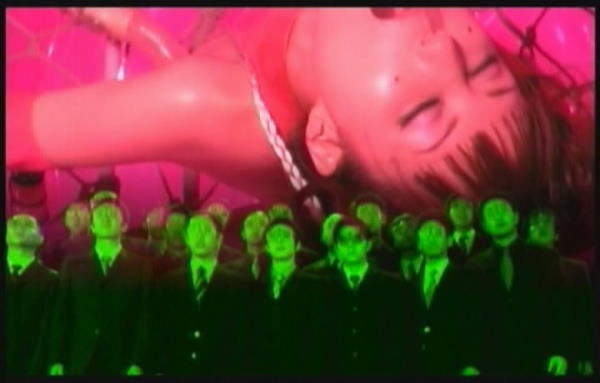
But truly, the story is not the reason you get this. In fact, the visuals distract you so much from the story that I strong recommend reading the story bits on the extras prior to watching this film. The reason you watch this is for the extremely weird but interesting set designs and cinematography. Every “vignette” offers some truly interesting cyberpunk visuals. Shocking neon is the order of the day here. Shocking “you” is the point of the film.
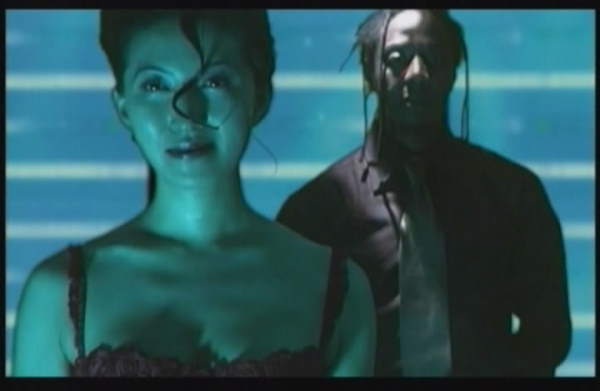
The Bottom Line: If you’re a “no boundaries” kind of film watcher, and are interested in something WAY off the beaten path, give I.K.U. a try. Just to be clear, I.K.U. opened at the Sundance Film Festival, so again, this is not your average skin flick - this is an artsy skin flick. And honestly, rating this film is a complete waste of time, as I really have nothing to compare it to (I’m giving it a 6, just because…).
PS - one word of caution - the guy-on-guy oral sex scene is one that is NOT pixelated out, nor is the scene with the transgender (I think that’s what he is…a guy with an “in-between” part). Both only last for a few seconds or two, but are QUITE graphic if you get my drift…

Again, I could go on, but truly, commentary is a waste of time on a flick like this. What you need to evaluate whether you want to see this or not are screen captures. On to Page 2 of this review if you are so inclined. Fair warning - while I worked hard not to show any body parts, page 2 is clearly meant for adults.
Page 2: Screencaps–>>
~See movies similar to this one~
Year: 1998
Directed by: Ryutaro Nakamura
Written by: Chiaki Konaka
IMDB Reference
Degree of Cyberpunk Visuals: High
Correlation to Cyberpunk Themes: Very High
Key Cast Members:
Lain Iwakura: Kaori Shimizu

Overview: Serial Experiments Lain is a psychedelic, post-modern cyberpunk series that one wonders how the director ever managed to make. Lain centers on a very shy school girl who slowly begins to figure out that she is not what she seems to be. After getting a computer and connecting to the “wired,” something with is far more expansive than the internet, Lain begins to realize that she may not be human, and that truly, reality and the “self” is exists (or does not exist) on many different levels. As the story progresses, Lain “evolves” in terms of understanding what she is and her place in a very post-modern world. We also get many interesting side stories, including crime, teenage coming of age issues, and dastardly plots.

The pacing of Lain is just strange. Lain is NOT an action fest, nor is it by any means straight forward. Lain starts out rather slowly and gets weirder every episode. Truly, the story is told in a very “traditional” post-modern fashion in that we have fragmented vignettes structured in a seemingly random non-linear manner. Lain uses disconnected visuals to continually barrage the viewer with different textures, color schemes, and sounds. Yet over time, it becomes clear that the story is being spunk in seemingly a cyclical fashion, almost as if we are exploring a large Mandelbrot by starting at an outside spiral and slowly working our way around to the big picture. Each fragmented vignette gets added to until, at the end, we have a rather expansive tapestry to explore.
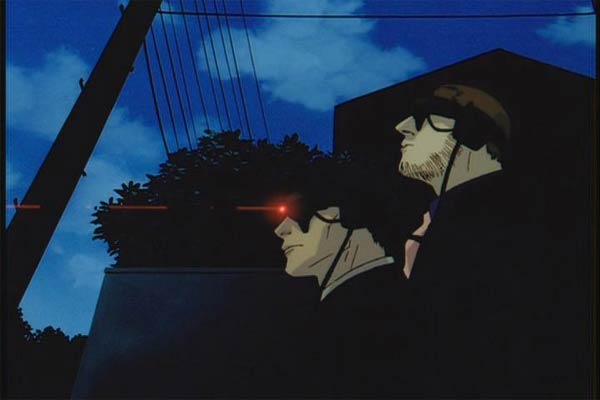
Many different and interesting philosophical ideas. But it is pure philosophical cyberpunk. Many key issues are discussed here, including:
- What constitutes “reality”?
- How real is time?
- What constitutes the “self” as a singular entity?
- What constitutes “God”?
- How are sentient programs different from humans?
- Is there such a thing as collective humanity?
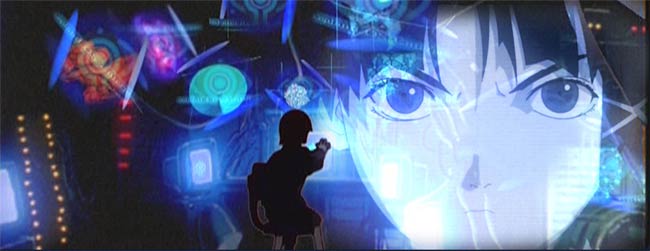
The visuals in Lain really aren’t there to “Wow” us as they are in some animes - instead they are often designed to provoke moods and thought patterns (BTW, there are so many screen caps available, that there was no need to take my own). Among the thought provoking visuals, we get:
- Psychedelic visions that explore multiple “selves” versus a singular “I”
- Juxtapositions of noise with false clarity
- Information Theory described visually
- An ever increasing feeling “disbelievability” each time the drab and normal school scene is shown.
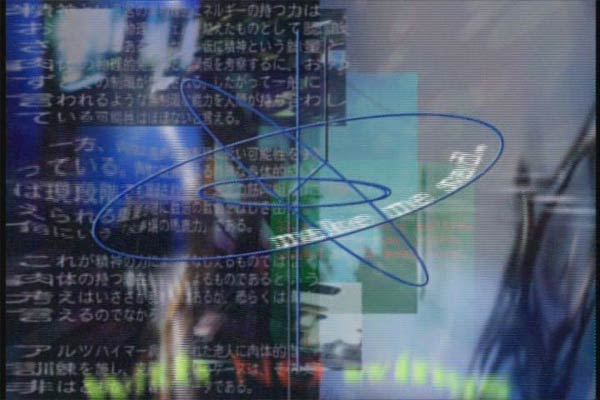
The Bottom Line: In the end, we are left with very open-ended thoughts. Serial Experiments Lain does not provide us with answers, instead, it opens us up to questions. And while I might argue that the post-modern pacing got too circular in places, and that I might argue the same tale could have been spun in half the time, the overall effect is rather extraordinary.
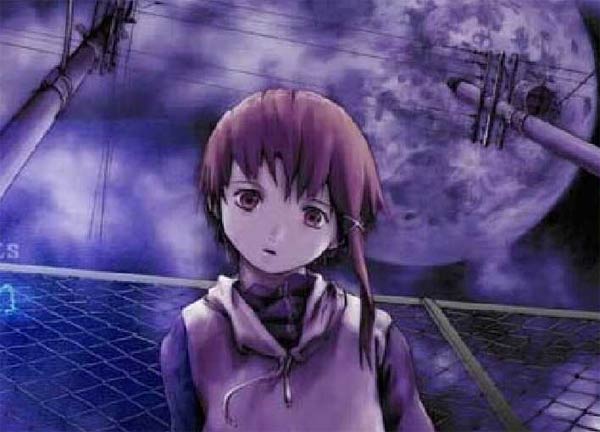
~See movies similar to this one~
Tags: cyberpunk movie review anime Serial Experiments Lain
Year: 1992
Directed by: Brett Leonard
Written by: Brett Leonard, Gimel Everett & Stephen King (original short story, but who filed a lawsuit to have his name disassociated from this)
IMDB Reference
Degree of Cyberpunk Visuals: High
Correlation to Cyberpunk Themes: High
Key Cast Members:
Dr. Lawrence Angelo: Pierce Brosnan
Jobe Smith: Jeff Fahey

Overview: Pierce Brosnan as 007 stars in this scifi espionage flick about a guy with a lawnmower who tries to take over the world…Well, that’s not exactly it, but close 
This might be another one of those I’m out to lunch on, but I’m guessing most have seen this flick. Lawnmower Man was originally derived from a Stephen King novel (although considering that King sued to have his name removed, we might infer he wasn’t thrilled with this movie), and is about a genius government funded scientist (Brosnan) who’s doing research on increasing human intelligence through using drug-assisted virtual reality experiments. His research, originally done on chimps, was cut off when a chimp goes wild, so instead of giving up, he does the research in his basement, using the local lawnmower dullard as his test subject.
Over time, the Lawnmower guy becomes awesomely intelligent, so much so that he grows more powerful than anyone could have possibly imagined. So much so, in fact, that he becomes a potential threat to mankind!
The Bottom Line: Lawnmower man is an early entree into 3D graphics. The graphics were rather decent at the time but certainly looks dated now. It’s still a nice scifi thriller that fully qualifies as a cyberpunk movie in every way possible. I enjoy this, and generally like Brosnan movies, but maybe its just a guilty pleasure of mine. Whereas I find it watchable in a cheesy sort of way, I can certainly imagine others scoffing at some of the insane plot points (like going from a multi-million dollar a year funded defense project, to getting better results in your basement). But even if you find this one watchable, it’s a pretty clear bet that you won’t stand a chance at liking the sequel.
~See movies similar to this one~
Tags: cyberpunk movie review
Year: 2003
Directed by: Byung-chun Min
Written by: Byung-chun Min
IMDB Reference
Degree of Cyberpunk Visuals: Very High
Correlation to Cyberpunk Themes: Very High
Key Cast Members:
R: Ji-tae Yu
Ria: Rin Seo
Cyon: Jae-un Lee
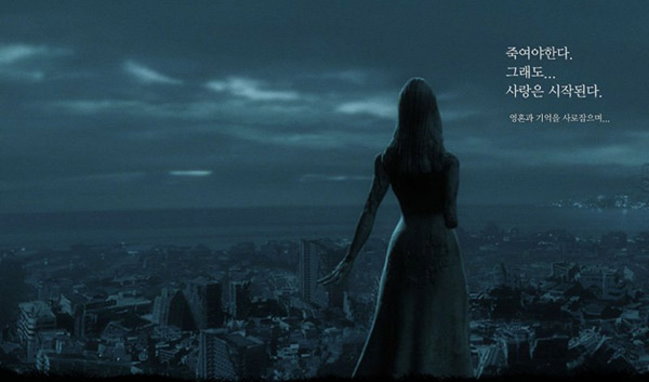
Overview: Natural City is a high priced attempt by the Korean movie industry to break into the Scifi Genre. The quality of the effects in Natural City clearly shine, both in the absolutely terrific set pieces, the painted backgrounds and the very realistic future setting. This is a cyberpunk movie to its core, with every possible aspect of cyberpunkness oozing from every pore of this movie. We get cyborgs, genetically engineered and cybernetically enhanced people, dominating corporations, theft and greed, seedy underground people and scenes, information access issues, and MASSIVE cyberpunk style. But truly, the reason Natural City rates this high is the absolutely wonderful cyborg character study in exploring issues of humanity.

The Setting: Natural City as a title is 180 degrees from what you get in a setting - nothing is real here. In this dystopian setting, genetic engineering and cyborg development have become an accepted way of life. Pretty much everyone in this city lives a miserable existence, in fact, its expected that life is pain. Vacations are taken in the equivalent of a Star Trek Holodeck type machine. The ultimate dream of everyone in this city is to become rich enough to retire to a floating hotel called Muyoga (see the picture immediately below), which advertises that it can erase your current memory and place you in a "virtual" life of your own choosing. This is extremely interesting, especially when compared to Oshii’s Avalon, in which one view of the the "ultimate" life is one where you are in a simulated reality of your own mind even though your body is a slobbering mess in the "real" world.
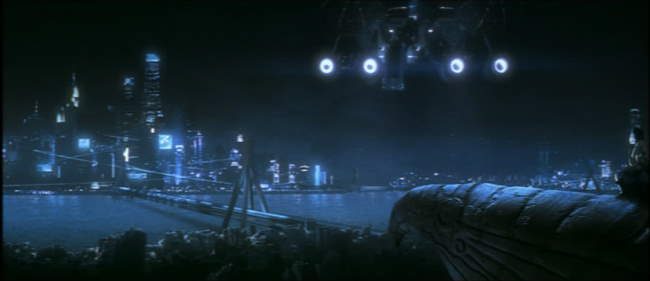
In Natural City, Cyborgs perform a myriad of societal functions - everything from entertainment and dancing, to restaurant helpers to working on the police force. To perform all these functions effectively, Cyborgs have a degree of self-awareness. This causes significant complications when their expiration date nears, as they know what it means to "expire." While some of the characteristics seem vaguely familiar to another far more famous cyberpunk movie (cyborgs with expiration dates, for instance), the story itself is radically different.
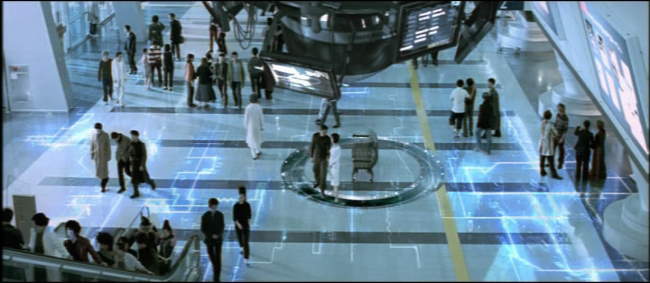
The Story: Natural City centers on the internal struggles of a highly talented cop named "R." He is tasked with finding and capturing renegade cyborgs, but ends up falling in love with a cyborg dancer named Ria who’s expiration date is only 3 days off. The movie centers on R’s compromising his principles and dealing with the cyborg underworld in a vain attempt to find a way to save his Ria. He finds a shady cyborg doctor who promises that if he finds a person with the right genetic match, he can inject part of their brain cells into Ria, which will save her. The doctor finds such a match in a street girl named Cyon.
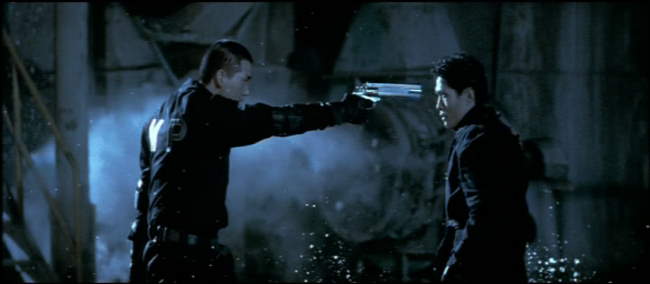
Complicating matters, R’s best friend Croy, who is also his boss and fellow police detective, has discovered his duplicity. During a raid to capture some renegade warrior cyborgs, Croy notices that R is not shooting them in the head (which kills them be wiping out their AI chip), but is instead going back later and collecting the AI chips to sell for money. Croy tracks R back to the shady doctor. Worse, one of the warrior cyborgs who escaped is also after Cyon for reasons that become all too apparent as the movie unwinds.
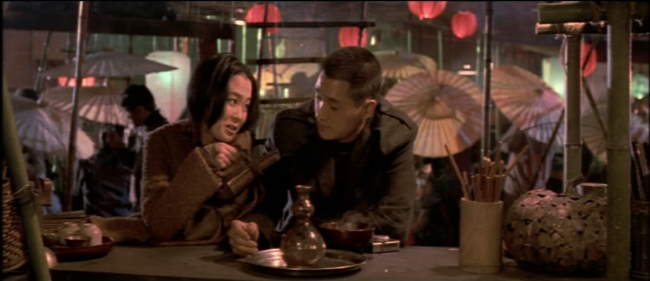
The Look: Natural City’s atmosphere is a grimy, lived-in futuristic environment. In some of the police scenes, Natural City comes across like a live-action Jin Roh movie (Jin Roh is definitely an influence for the action visuals). The high-quality and very original Scifi set pieces and occasional CG fits wonderfully, and along with the artistic backgrounds add up to a very immersive experience. The surround sound is not stunning, but is certainly decent and doesn’t detract from the experience. On top of this we get some wonderfully symbolic visuals, such as when Cyon sits atop a stone eagle statue, dreaming of life on the virtual hotel.
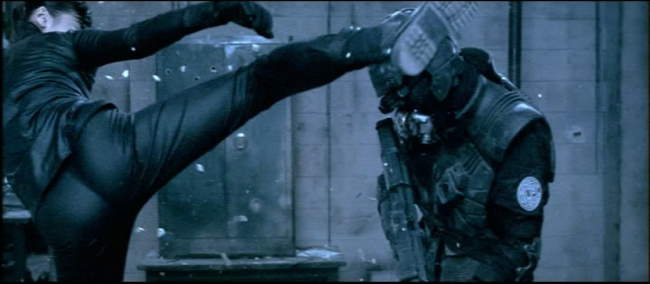
The Colors: Like most cyberpunk movies, Natural City uses one dominating color palette for the majority of the scenes. Blue is the color of choice, but varies from ultra-light to dark and dense blues. The lighter scenes usually depict high-tech human aspirations, whereas the darker scenes are left for massive action shots and for shots depicting the destruction of humanity, such as the gritty cyborg replacement lab. Every so often, we also get some really nice oranges and browns, but these colors are usually used more as chapter transitions.
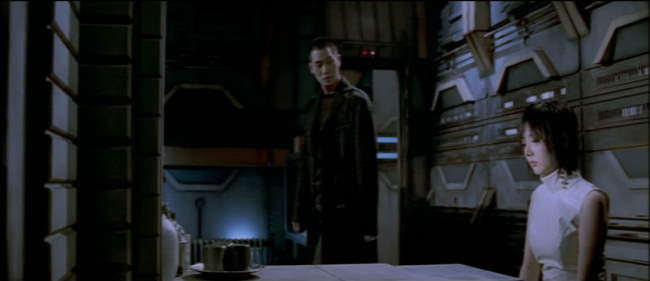
The Action: Natural City is a character exploration first, but the action and effects are on display, and in high quality. The action involves both slo-mo and high speed camera shots, along with LOTS and LOTS of blood and gore. The ending especially is somewhat of a gorefest, which is weird to see in a movie that is mostly a drama in nature. Also, near the end of the movie, we get treated to an evil, but ultra-hot cyborg warrior chick in skin tight lycra who engages in some major ass-kicking (see above for a pic of HER ass while kicking someone!). Talk about a plus! While we’re on the subject, we also get treated to some cute asian cyborg boobies at the beginning of Natural City - definitely a nice way to start the pic! (although, when you understand what the beginning boobie scene signifies it sorta takes away the fun).
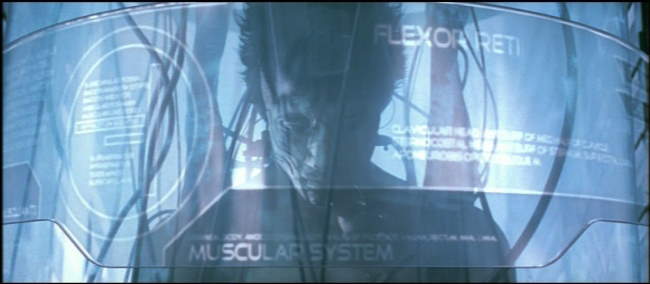
The Pacing: As I mentioned earlier, this IS a Korean movie. My wife is Korean, so I’m somewhat used to the pacing we see here. From reading a few reviews, Natural City has been panned for being way too slow and plodding in the middle. All I can say is, "Welcome to Korean Cinema." This is really a case where story telling is just different there. For a Korean, this movie is not at all slow, but has rather standard pacing, which means we get REAL in-depth and repeated scenes with the purpose of mood and detailed character study. Most important for Koreans is to be able to identify with the emotion and mood the characters are experiencing. Natural City takes the time to do this with all the main characters.

The characters really build in believability and engagement as the story progresses. At the beginning, R appears quite shallow, as does his friend and the street girl Cyon. By the end, all three, and especially Ria, his cyborg lover grow to be characters you really empathize with. The motivations for all become clear, including their virtues and flaws. The ending is also a rather "normal" Korean dramatic love story ending, which is to say, one very different from how an American film might end. Its not a feel-good movie, but then again, few Korean dramas are.
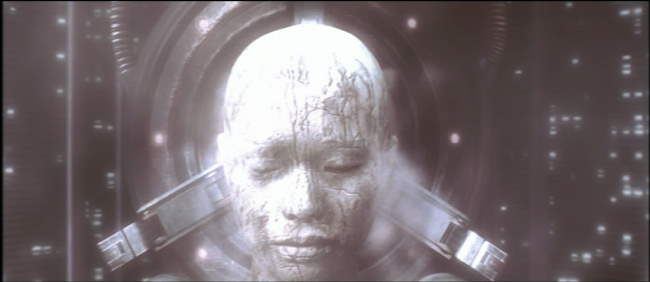
For me, the highlight of Natural City centered on Ria, the cyborg. To me, Ria captures the cyborg struggle for humanity better than any character in all cyberpunk movies save one scene (the Blade Runner’ sRoy Batty "I’ve seen things you wouldn’t believe" soliloquy, of course). While I didn’t catch this the first time through, the very beginning of the movie is told from Ria’s perspective, and then really, the last third of the movie centers on Ria (minus the action sub-plots). There are a few scenes that make it clear she "knows" what’s happening to her. She is programmed to be a dancer, but as she reaches her expiration date, she no longer can do this well. In one scene, Cyon shows her the "1 day" notice that arrives in the "Fifth Element" style mail slot. As her "time" approaches, you really do get the feeling of the Rutger Hauer speech at the end of Blade Runner, although Ria conveys this sentiment more broadly over a number of scenes and images. I want to go into this further, but this starts coming off as a spoiler, so I’ve added a more elaborative discussion of Ria’s motivations (spoilers) after the screencaps on Page 2.
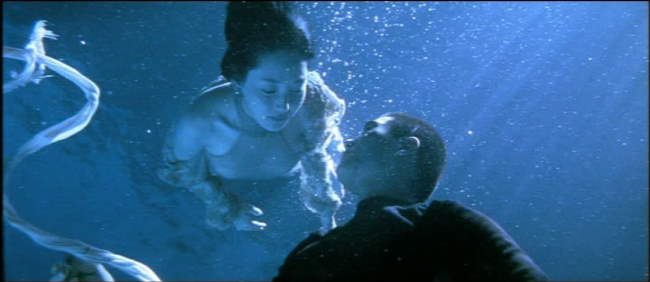
The Bottom Line: If you like cyberpunk films, the visuals alone make this a MUST SEE. If you like character studies in science fiction settings, you probably also want to see this. I truly LOVE Natural City, but be warned, the pacing is different from what you might expect. This is a Korean movie, and certainly plays like one. Also, be warned - like Wonderful Days, the ending has standard Korean Melodrama type stuff. While some might argue this doesn’t belong in the top 10, for me there’s no doubt that it does. The action and visuals are great, but Ria’s story clearly forces it there if nothing else.
Page 2: More Screen Caps and Ria’s Motivations Discussion (Spoiler)–>>
~See movies similar to this one~
Tags: cyberpunk movie review
Year: 1997
Directed by: Gabriele Salvatores
Written by: Pino Cacucci, Gloria Corica, Gabriele Salvatores
IMDB Reference
Degree of Cyberpunk Visuals: Very High
Correlation to Cyberpunk Themes: High
Key Cast Members:
Jimi Dini: Christopher Lambert
Solo: Diego Abatantuono
Naima: Stefania Rocca
Joystick: Sergio Rubini
Lisa: Emmanuelle Seigner
~Revised Review: The star rating is for the Italian language version. ~
They US Region 1 English Dubbing version only merits 6 stars
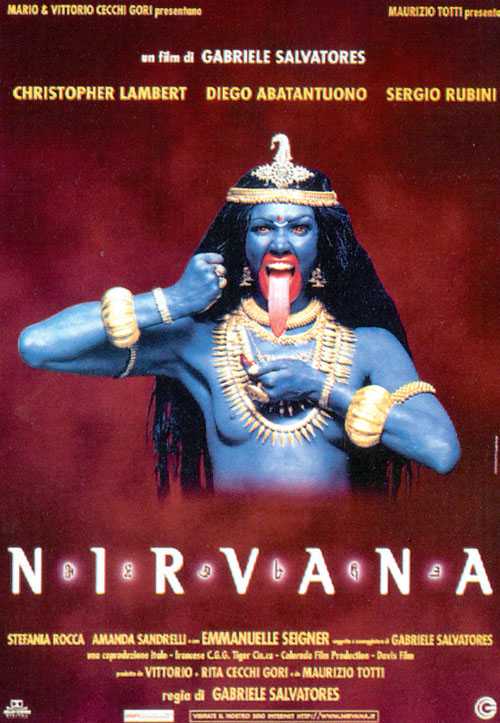
If you aren’t buying this cover, you probably aren’t getting a DVD with Italion (with English Subtitles). The US version only has English Dubbing.
Overview: Previously, my review of Nirvana, which was based on the Region 1 English dubbing only copy started as follows:
All in all a decent cyberpunk flick from Italy, but unfortunately suffers horribly from bad dubbing. The dubbing here is as bad as your average anime dubbing, and unfortunately here in the US, this is all we get.  I wish I could get a copy of this in Italian with subtitles - if I did, I’m sure this would shoot up significantly on my cyberpunk list, but alas… I wish I could get a copy of this in Italian with subtitles - if I did, I’m sure this would shoot up significantly on my cyberpunk list, but alas…
Now that I’ve purchased the Italian copy (which set me back about $30 bucks!), I still agree with my comments above - the dubbing ruined it. Truly. In Italian, the movie has the necessary spark of energy and emotion missing from the dubbed version. The story itself always held up at least decently well. What was missing is any connection to the actors. The Italian version fixes this. The picture below really captures the colorization of this film -we get lots of drab, dirty settings with shocking neon colors intermixed.
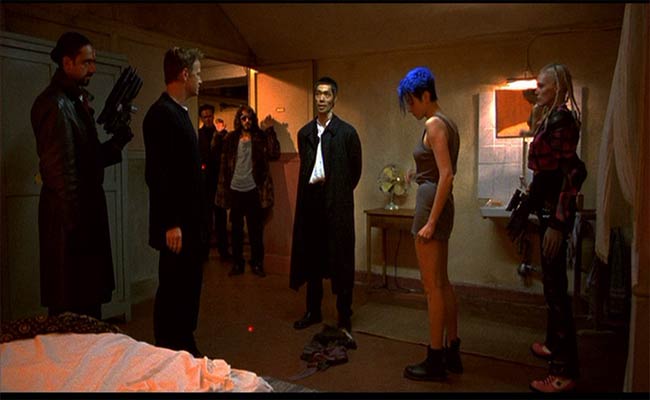
The Story: Nirvana is NOT Tron meets Blade Runner Meets Matrix as the cheesy tagline on US version of the DVD suggests. However, Nirvana is a pretty good low-budget cyberpunk flick with a strange virtual reality (VR) angle. Jimi (Lambert) is a computer programmer who is working on a VR simulation game with very realistic seeming characters. Somehow a strange virus infects his game and turns one of his VR characters into a self-aware program. The VR character has to “relive” the game sequence almost in a groundhog day type fashion, only each time he has to figure out how to avoid getting killed so he can progress further into the plot. The game is 3 days away from being distributed everywhere and the program doesn’t want to be duplicated everywhere, and worse, feels trapped in a nightmare. Lambert feels bad for the VR character and starts working to get the program deleted from corporate.
Unfortunately, this involves hacking into the corporation’s corporate system. To do this, Jimi has to go to the seedy part of town outside the barriers to find the expertise he needs. Jimi is also distraught by recently losing the love of his life, Lisa, who left him for still undetermined reasons. Jimi stumbles upon Joystick, a former cowboy (hacker), who has lost his eyesight and now has to rely on failing eye implants to see. Jimi tells Joystick that the corporate system is also home to millions in illegal funds, that can be stolen with the right hack. Joystick and Jimi work out a plan to break into the corporate system. Along the way, they meet up with Naima, a computer expert, who also has a way of bringing Jimi back to Lisa. Unfortunately, the corporate agents are on Jimi’s trail, and want the final verison of the game.
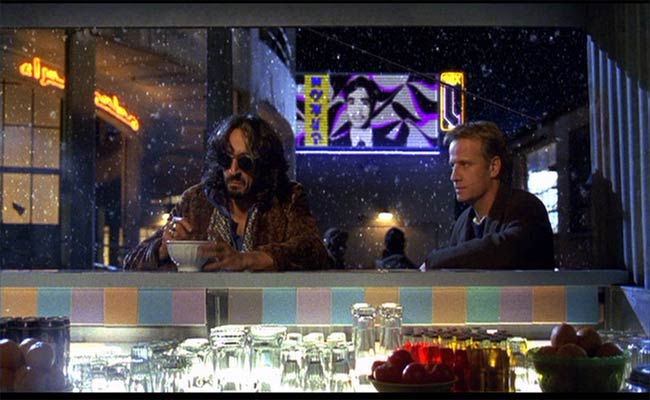
The Atmosphere: The atmosphere is similar to Blade Runner in the sense that its a seedy futuristic setting. More interesting is the Neuromancer-style cowboy hacking that Nirvana embraces. The idea that we can allow our consciousness to “ride the net” in order to break in to data systems is one that currently doesn’t jive with modern computing, but it is very motivating. There are also a number of cool cyberpunk elements in Nirvana, including eye implants, hard drives embedded in people’s brains, etc. I’ve gone ahead and made a few screencaps of this to give you a better idea of the visuals:
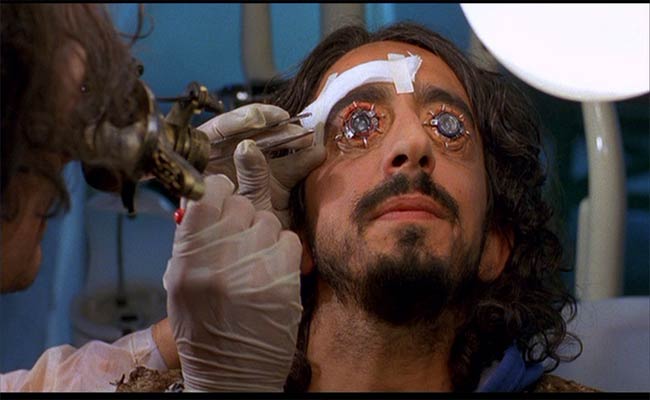
Just your average eye surgery…
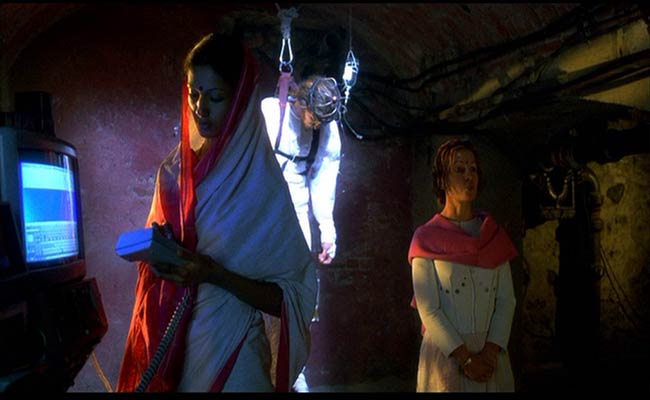
There are lots of Indian visuals here. This is really the setting.
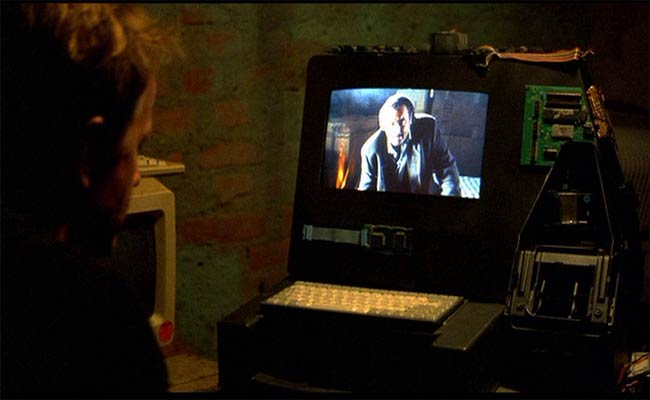
This is one of the many sequences of Lambert talking to his self-aware VR game character.
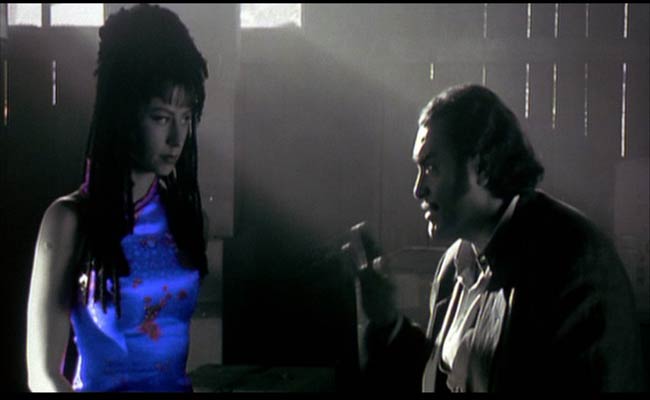
Here’s our self-aware VR character, trying to convince a non-self-aware VR whore that they are not real. This chick’s dress changes color every few seconds.

This chick is implanting a memory capture of Lambert’s wife’s memories.
The Bottom Line: If you’re looking for a really good low-budget cyberpunk movie, Nirvana is your flick - AS LONG AS you get the italian version. I’m not sure it’s worth $30 bucks, but it’s LOTS better than the dubbed version. Truly, I don’t get US DVD distributors sometimes, but hopefully this trend towards dubbing is slowly changing. Even if you are stuck with the dubbing, which pretty much ruins the story, at least the visuals are more than decent. On top of this, I truly love Lambert, so I was able to put up with it.
PS - thanks again to the comments below that enabled me to find a copy of this in Italian 
~See movies similar to this one~
|



























































